Spatial
Elim Hu Dwelling in the Wrath of Nature: A tale of building resilience in the face of climatic adversity
-
Tauira / Student
Elim Hu -
Kaiako / Lecturers
Chris Barton, Kim Sinclair
-
School
The University of Auckland
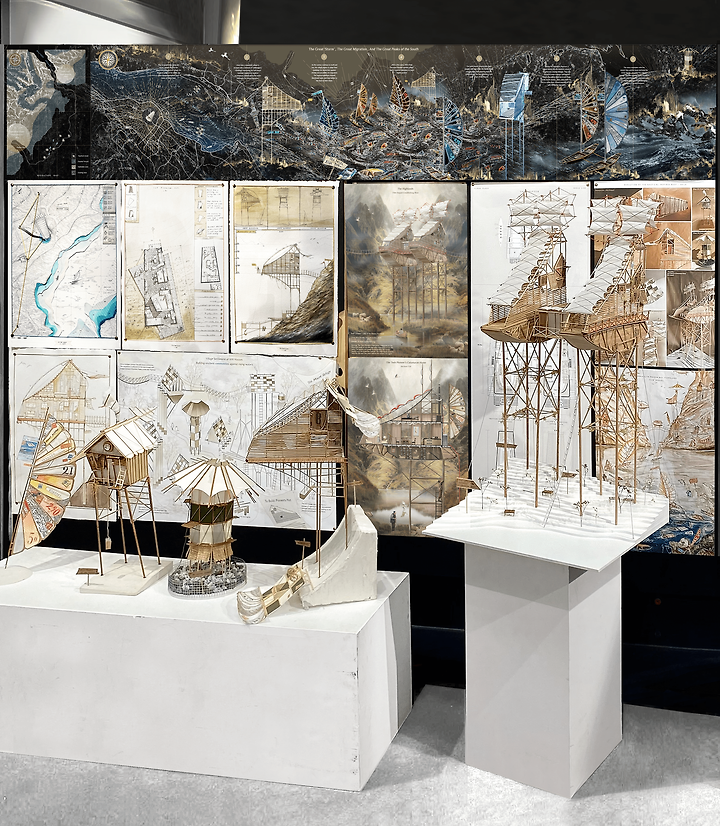
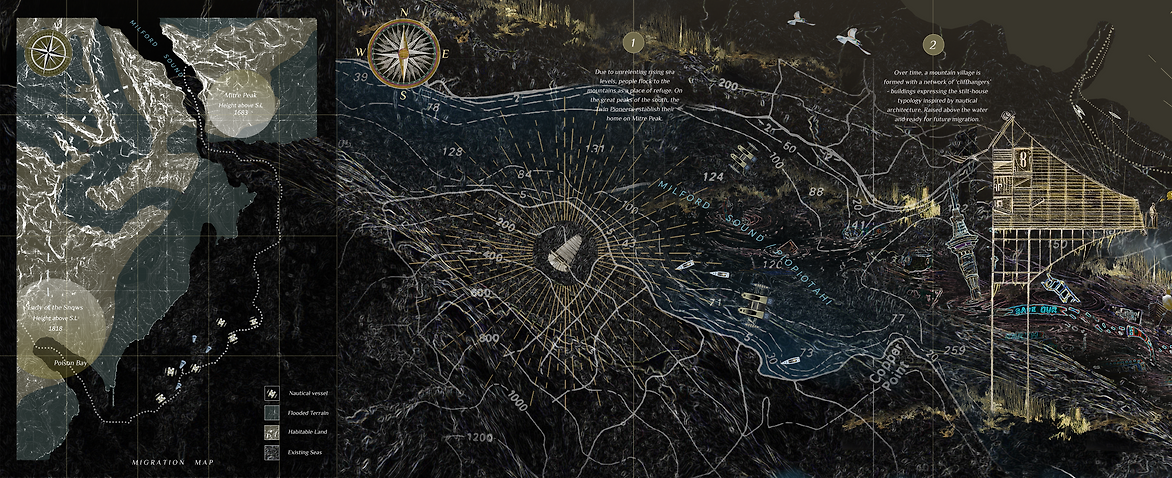
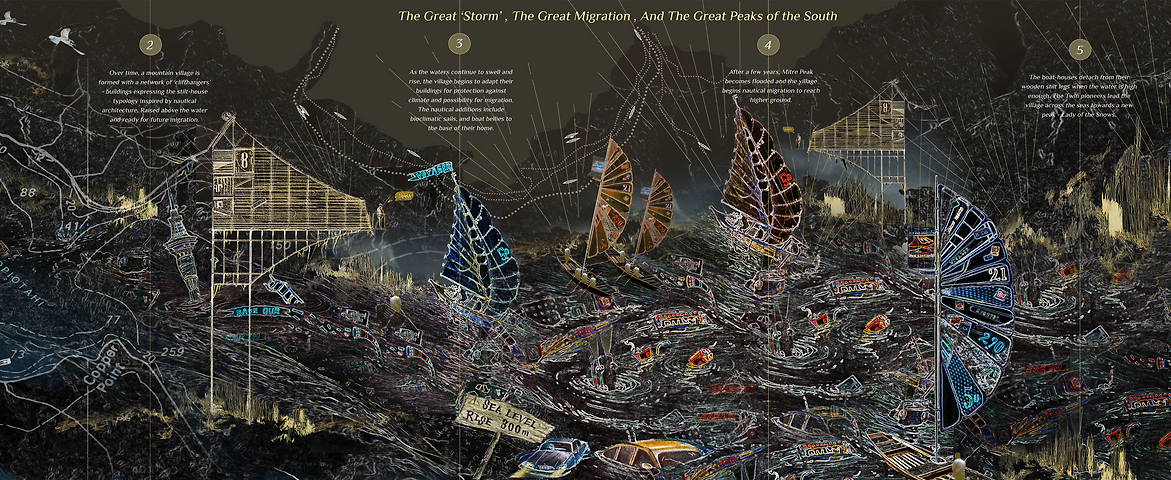
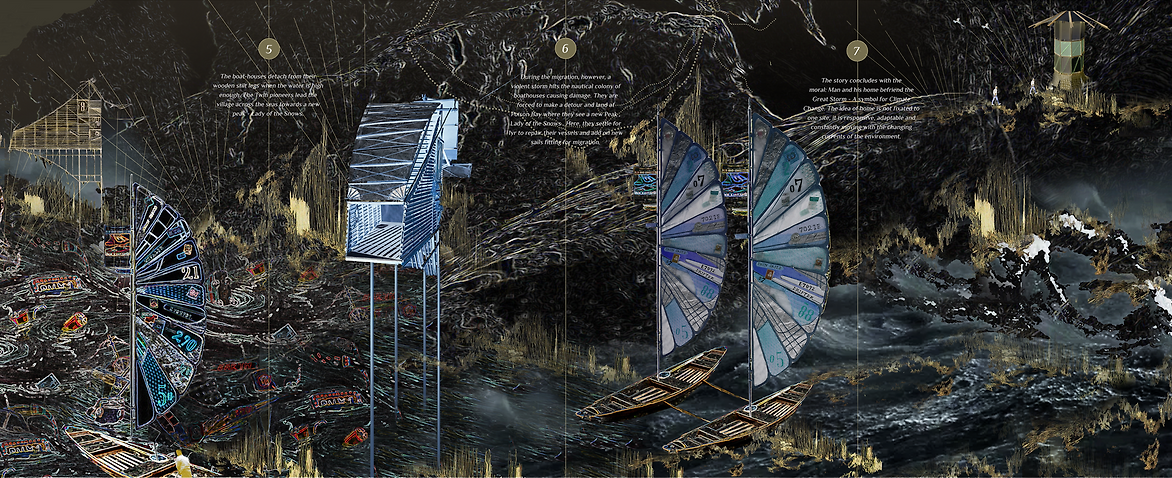


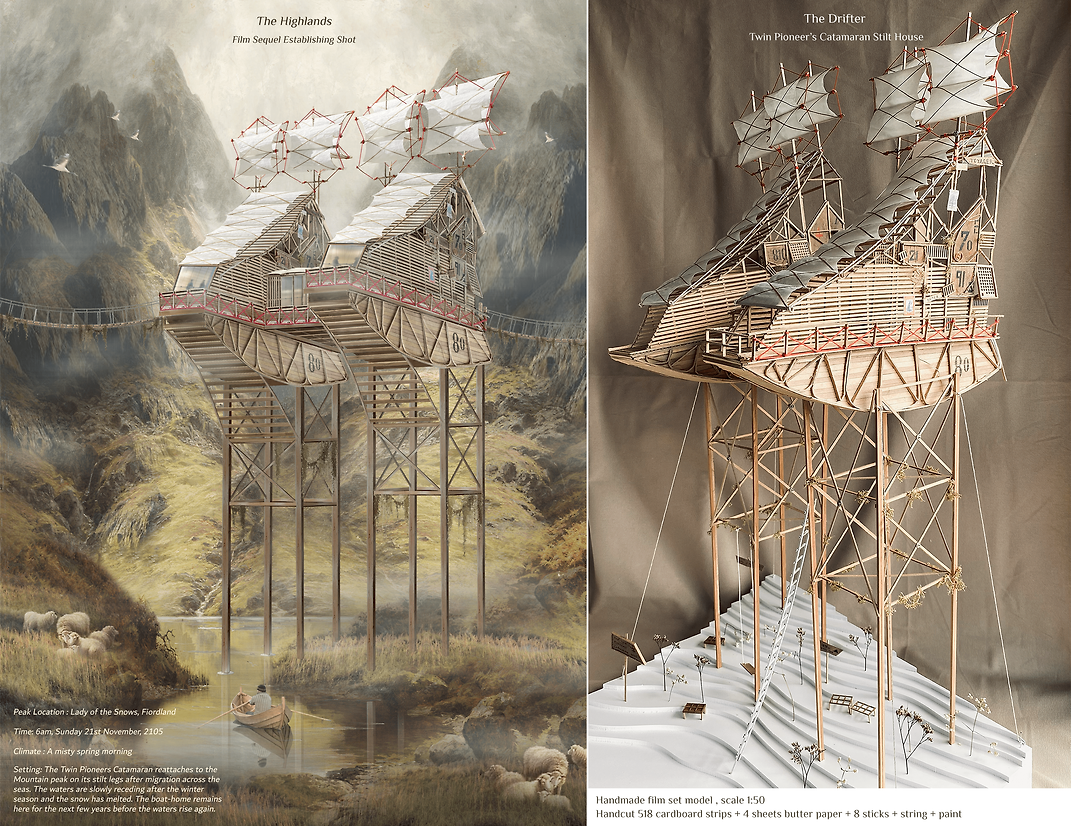
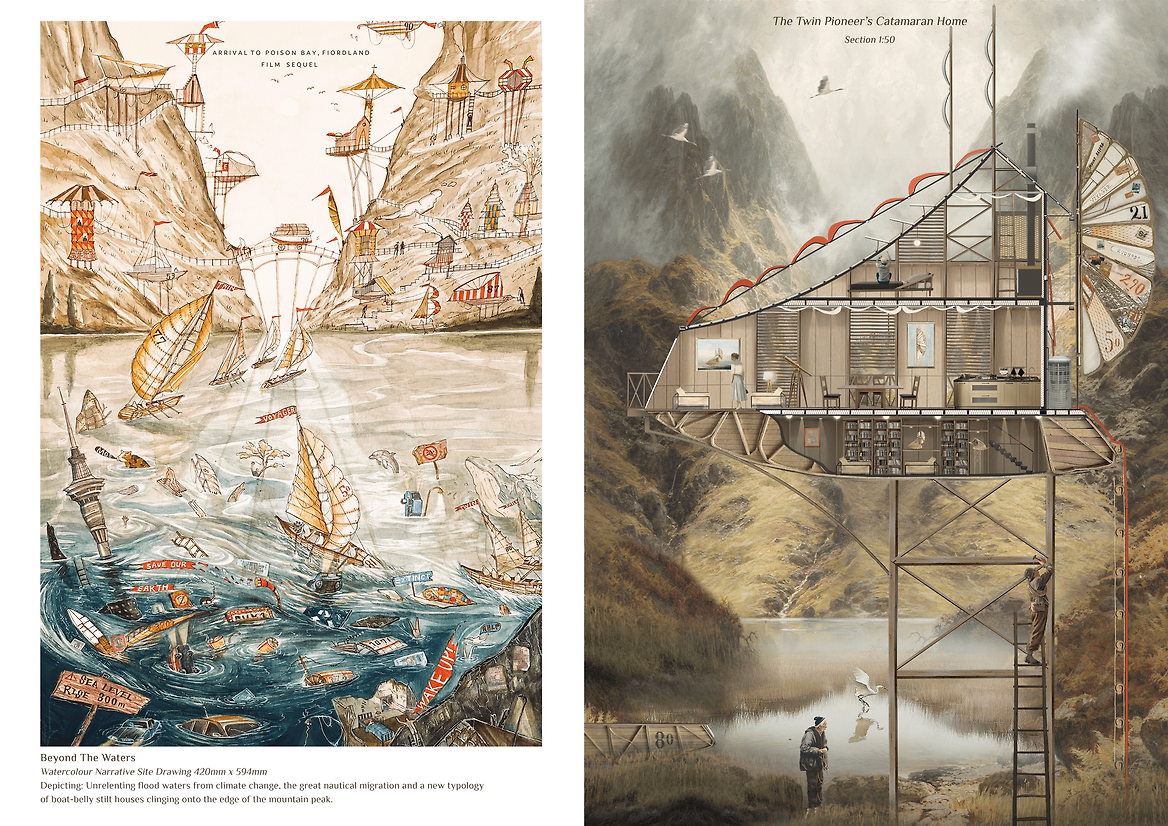
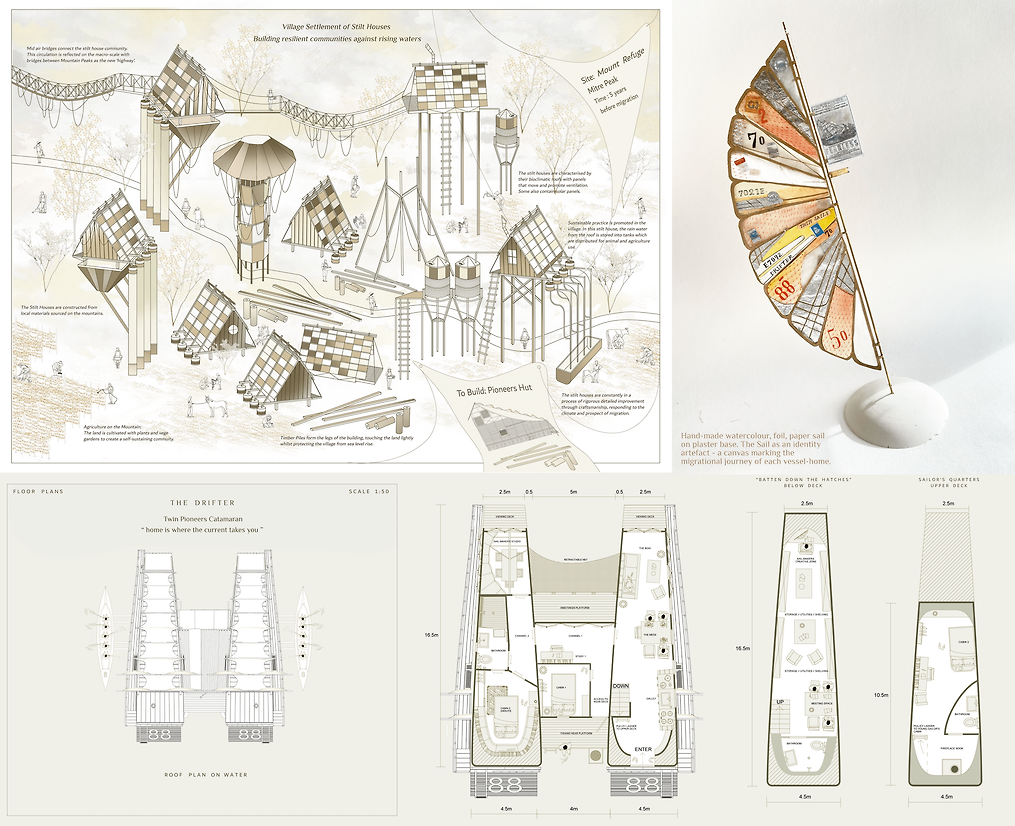

Description:
“Standing gallantly on the rocky coast of the Mitre Peak, great gusts of wind and sea salt were attacking the house from all sides. The Pioneers hut stood firmly on its stilt legs. The mountain was its refuge, its foundations were embedded deep into the coastal terrain, drawing supernatural strength. Howling winds tried to besiege the sail-like roof that was protecting the timber shell of the house. The wind was playing tug of war with the roof, trying to pull it off and tear the house into shreds but the house remained stern.”
'Dwelling in the Wrath of Nature: A tale of building resilience in the face of climatic adversity' navigates the creative threshold between film storytelling and architecture, weaving the whirlwind magic of a whimsical narrative themed around apocalyptic hope with the imminent real-world threats of climate change, specifically the threat of dramatic sea level rise on our homes and communities. The project envisions how architecture, in its imaginative forms, can respond ingeniously to such events through the development of a new stilt house typology mediating between 'home' and 'vessel.' It challenges the idea of architecture operating across changing landscapes, beyond the notion of one "place" and the limitation of a fixated site. Subsequently, the project explores the creative capacity for designs to exist dynamically with the climate; in a constant state of adaptation and responsiveness. The techniques of film are translated in the design process through handcrafted 'film-set' inspired physical models, watercolour narrative storyboards and movie-poster-esque drawings.
The tale begins in the year 2100, New Zealand’s remaining civilization flocks to the mountains in the face of exacerbated sea level rise. All farmland and cities are submerged in salt water. Only mountain peaks remain, rising out from the raging seas. For 50 years, the steep mountainous terrain becomes the new landscape, providing refuge for the people, forming vast village networks as people migrate on vessels between mountain peaks. In this tale of climatic resilience and collective community spirit, we follow Nathaniel and Thomas, twin brothers and pioneers of the ‘Mount Refuge’ colony located at Mitre Peak in Fiordland National Park. Their home, the Pioneer's Hut, clings onto the edge of the mountains with multiple cliffhanging neighbors, forming a village of stilt houses 'living on the edge.' A typology of stilt houses arises in the film prequel inspired by nautical architecture and evolves into a new typology of boat-belly stilt houses in the film sequel located at Poison Bay as the community migrates across waters. This typological development manifests in the evolution of the Pioneer's Hut into The Drifter - a catamaran boat-belly stilt house able to detach for migration.
The stilt houses are equipped with the structural potential to transform, essentially, from a house to a nautical vessel with custom boat belly base, bioclimatic sail roofs and timber stilt legs which break off when the rising waters eventually flood the existing mountain peak and the village is forced to migrate to another peak; the house transforming into a vessel.
The film narrative follows twin pioneers, Nathaniel and Thomas on a journey of reconciling our relationship with home and our sense of place amidst the unpredictable wrath of nature. Through the act of building with the village community, engaging with their traditional sail-making craft and developing the design of their home to respond to the changing landscapes, their connection with home and place is restored. On a macroscopic level, this engagement with craft is reflected in the analogue intricacy of hand-cut cardboard models and hand-made paper sails.
Judge's comments:
Weaving a compelling narrative of climatic resilience and community spirit into an innovative architectural response this project challenges fixed notions of place and harnesses the power of adaptability in the face of environmental adversity.